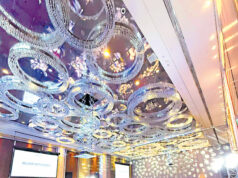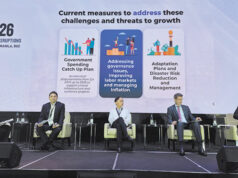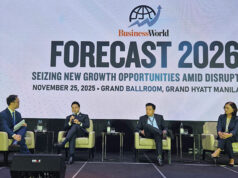According to Oxford Business Group (OBG), the effects of the sustained economic growth of the Philippines have been obvious in the construction industry, which has been getting a lot of mileage out of what the group called “pent-up demand” and “a positive outlook for future growth.”
“This favorable momentum has driven the industry to one of the country’s highest growth rates, with data from the Philippine Statistics Authority (PSA) reporting growth of 11% in 2014, 10.4% in 2015 and a jump to 14.6% in 2016,” OBG said.
Growing this much has allowed the industry to make bigger pecuniary contribution to the economy — from P802.9 billion in 2014, or 6.3% of the gross domestic product (GDP), to P1 trillion in 2016, or 7% of the GDP.
To keep up with the demand of the construction sector, cement producers have accordingly expanded their production capacities.
“Data from the Cement Manufacturers Association of the Philippines showed that cement consumption reached 25.9 million metric tons in 2016 from 15.6 million metric tons in 2011 largely due to robust public and private construction spending caused by the positive economic environment,” Holcim Philippines pointed out in an e-mail to BusinessWorld.
But the first half of 2017, in the words of Republic Cement President Renato C. Sunico, was “a challenging season for the cement industry in the Philippines.”
“First, the market demand was not as expected due to delayed projects, both in the private and public sectors. Second, there was increased competition from cement imports. Lastly, there were higher input costs e.g., coal. So really, there were headwinds from multiple fronts, which resulted to lower-than-expected performance from the industry,” Mr. Sunico told BusinessWorld.
For its part, Holcim Philippines said: “Last year’s volumes were significantly higher due to pre-election infrastructure spending, and industry prospects remain positive with the government’s commitment to step up investments to increase competitiveness and boost the economy.”
OBG said the vast majority of cement comes mainly from a small number of domestic producers and only a fraction is shipped in from companies overseas.
“While foreign-produced cement is not subject to import tariffs and is often cheaper — particularly material sourced from Vietnam and China, which produce at a lower cost and currently maintain excess capacity — there are some non-tariff trade barriers that benefit local companies. These include quality control checks, packaging requirements and price controls that discourage dumping of oversupplied products at cost into the Philippine market,” OBG said.
The Philippines, the group noted, imported 3.8 million tons of cement and clinker from Vietnam in 2016, with the majority of the imports going to remote locations in Visayas and Mindanao, which are far from domestic supply points and therefore susceptible to shortages and higher prices.
Since the announcement of the current administration’s bold program, dubbed “Build, Build, Build,” which seeks to modernize the country’s poor infrastructure, cement producers have begun to build themselves up.
“The administration’s ‘Build, Build, Build’ Program will certainly drive cement demand,” said Ignacio Mijares, president of CEMEX Holdings Philippines, Inc. “CEMEX Philippines is fully supportive of the government’s plan to usher in the ‘Golden Age of Infrastructure’ starting from 2017 up to 2022. The company remains bullish about the growth prospects from the many infrastructure projects and public-private partnerships.”
He continued, “In fact, CEMEX Philippines is in the works of expanding its capacity by 1.5 million tons through the construction of a new integrated cement production line in its Solid Cement Plant.”
Holcim Philippines, meanwhile, is investing $54 million or roughly P2.8 billion over the next two years to increase its cement production capacity from the current 10 million metric tons to 12 million metric tons to meet the demand from the government as it starts to construct its flagship infrastructure projects. This billion-peso initiative is also a continuation of the company’s debottlenecking of its sites in 2016, which had raised its capacity to its current level from 8.5 million metric tons.
“As our president and CEO Sapna Sood said in our disclosure last July, the investments show Holcim Philippines continued commitment to the development of the country and to serving our customers better,” the company said. It added that the investments are an assurance that the company would continue to reliably supply essential building materials as cement demand increases due to the government infrastructure projects coming on stream.
When asked about how the cement industry would fare as the year concludes, Mr. Mijares said, “Improvements in public sector construction are starting to be realized in the second half of this year, now that government spending seems to be underway. This, plus the recurring private construction should bode well for demand of cement.”



